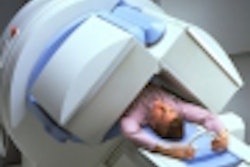TORONTO - You can pardon nuclear medicine proponents if they’re feeling a little flush. The modality, once written off as obsolete by much of the medical imaging world, is finding itself smack in the middle of a remarkable boom as demand for metabolic imaging data skyrockets.
That’s evident at this week’s Society of Nuclear Medicine meeting in Toronto. Nuclear medicine is being used in an increasing range of applications, from hybrid CT/PET scanning to the tracking of radiation treatment. The subspecialty even received a surprise gift on the eve of the conference, when a Medicare advisory committee recommended PET reimbursement for restaging breast cancer.
But nuclear medicine still has challenges ahead, according to a group of SNM officers speaking at a press briefing on Sunday. Increased PET reimbursement will continue to be a slogging match as proponents are forced to justify the use of the technology for each new application. Reaching out to other specialties will take time and effort, while the integration of nuclear medicine data with radiology studies could be hampered by the industry’s slow adoption of the DICOM 3.0 standard.
As a means of extending its influence throughout medicine, the SNM has aggressively pursued partnerships with other academic societies, according to SNM president Jonathan Links, Ph.D., a medical physicist at John Hopkins University in Baltimore. That work is paying off through the large number of scientific sessions this week that are being co-sponsored by the SNM and other groups, such as the American College of Radiology.
Clinical presentations on hybrid CT/PET imaging are excellent examples of the kind of cross-society pollination that the SNM is advocating. Anatomic and functional imaging are complementary and synergistic rather than competitive, and in the future both types of imaging will be conducted in a single study rather than to the exclusion of the other, according to Links.
Academic societies should function the same way. "The old notion that each society was an island doing its own thing has got to go by the wayside," Links said. "It’s really only the complementary and synergistic workings of multiple societies who really all care about the same thing that is going to advance any field."
While the societies make progress in building connections, nuclear medicine’s ability to integrate with other modalities from the technology point of view is being hampered by slow adoption of the DICOM standard in the industry, according to Dr. Jerold Wallis of the Mallinckrodt Institute of Radiology in St. Louis. Because it was the first imaging modality to adopt computer technology early on, nuclear medicine developed its own data exchange standard, Interfile, to facilitate the transmission of images between equipment from different vendors.
DICOM 3.0 has now taken over as radiology’s data exchange standard, but many nuclear medicine vendors and users still cling to Interfile, which is probably used more often than DICOM, Wallis said. The SNM believes that this could create data exchange problems if nuclear medicine data are to be used in other areas of the hospital where radiology dominates.
To address the issue, the SNM is making a renewed push to spur increased DICOM adoption, and is sponsoring a demonstration at this week’s meeting to show recent advancements in DICOM connectivity in nuclear medicine. Seven vendors -- ADAC, Areeda, GE, Marconi, NUMA, Siemens, and Toshiba -- are demonstrating the ability to import and process images from other companies.
PET is the technology that’s driving most of the renewed interest in nuclear medicine, and the modality has made oncology the subspecialty’s fastest-growing application, according to Dr. Peter Conti, associate professor of radiology, clinical pharmacy, and biomedical engineering at the University of Southern California in Los Angeles.
The engine of that growth is reimbursement, and PET scored another victory last week, when an advisory committee for the Centers for Medicare and Medicaid Services (CMS, formerly HCFA) recommended that Medicare and Medicaid begin paying for the use of PET in restaging breast cancer. The recommendation, made by the agency’s Medicare Coverage Advisory Committee, is being reviewed by CMS staffers, with a final decision expected by the end of the year.
In the meantime, PET advocates on July 1 will begin receiving reimbursement for four new PET applications --esophageal cancer, head and neck cancer, myocardial viability, and epilepsy -- approved by the agency in December.
While the reimbursement trend is positive, the SNM would prefer that CMS issue blanket reimbursement approval for PET, rather than requiring the technology to prove itself for each new application. "You shouldn’t have to go and do a clinical trial for every single sub-population of patients to demonstrate efficacy, particularly for a diagnostic, safe procedure," Conti said.
Still up in the air is FDG imaging with coincidence detection gamma cameras, a technique that was not included in the most recent round of Medicare PET reimbursement approvals. The SNM itself believes that some types of gamma camera-based techniques are not appropriate for coincidence imaging -- such as collimated FDG imaging -- and that users should set standards for acceptable equipment.
"We do acknowledge that there probably are inferior technologies that are being used for PET purposes," Conti said. "[The] question is, where you draw the line? If we move to a performance-based approach [to reimbursement], we will identify what that level is."
By Brian CaseyAuntMinnie.com staff writer
June 25, 2001
Related Reading
U.S. approves PET for re-staging breast cancer, June 20, 2001
HHS officials change name, structure of Medicare agency, June 15, 2001
SNM says HCFA understates PET's value in breast imaging, June 8, 2001
Medicare coverage of PET imaging for breast cancer to be challenged, June 8, 2001
Click here to post your comments about this story. Please include the headline of the article in your message.
Copyright © 2001 AuntMinnie.com




















